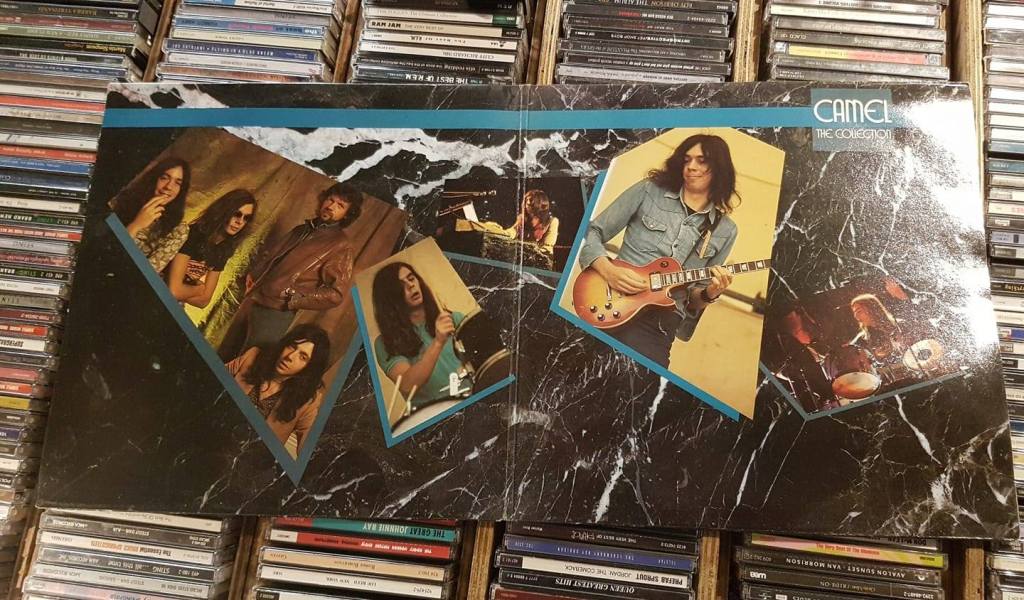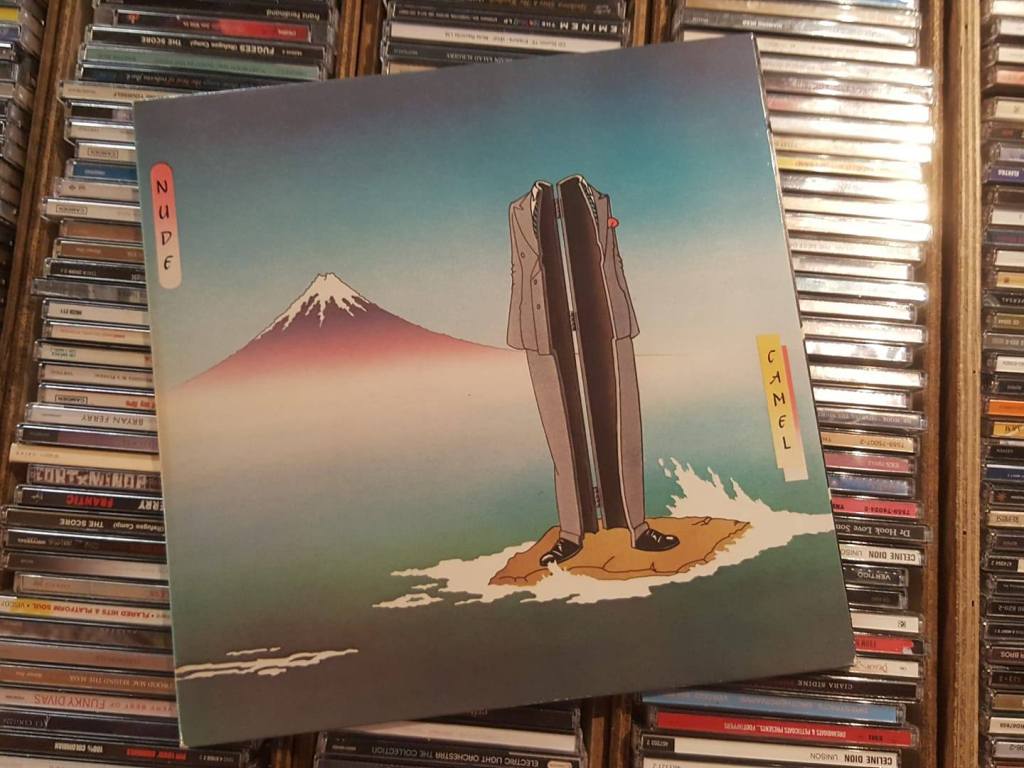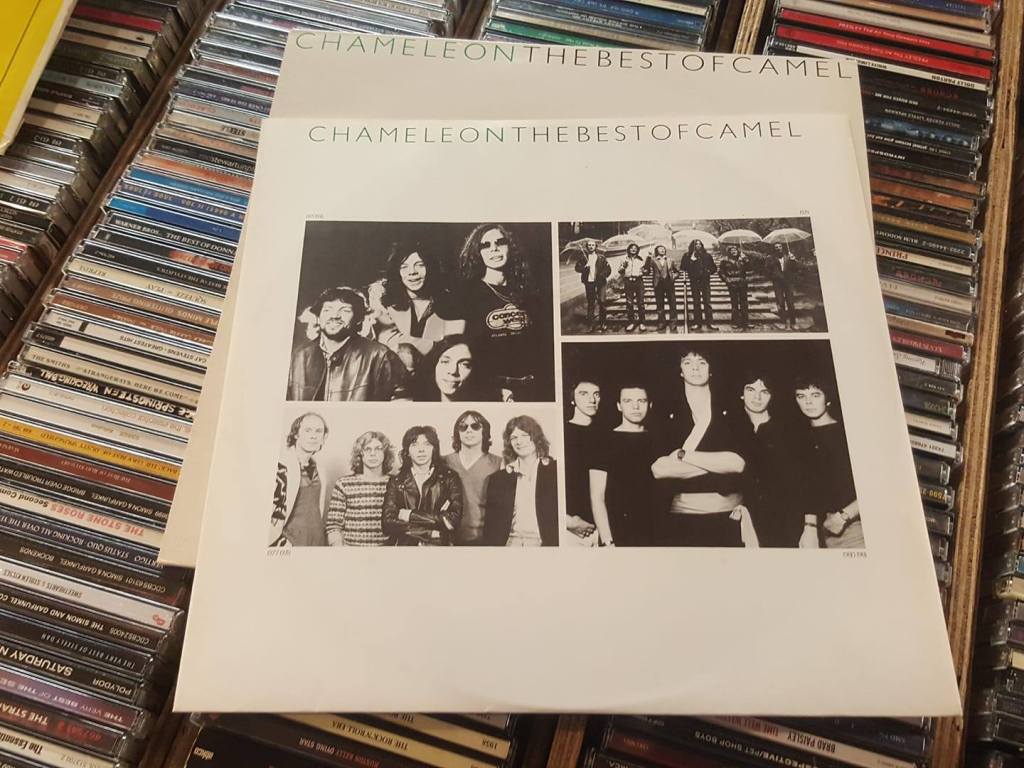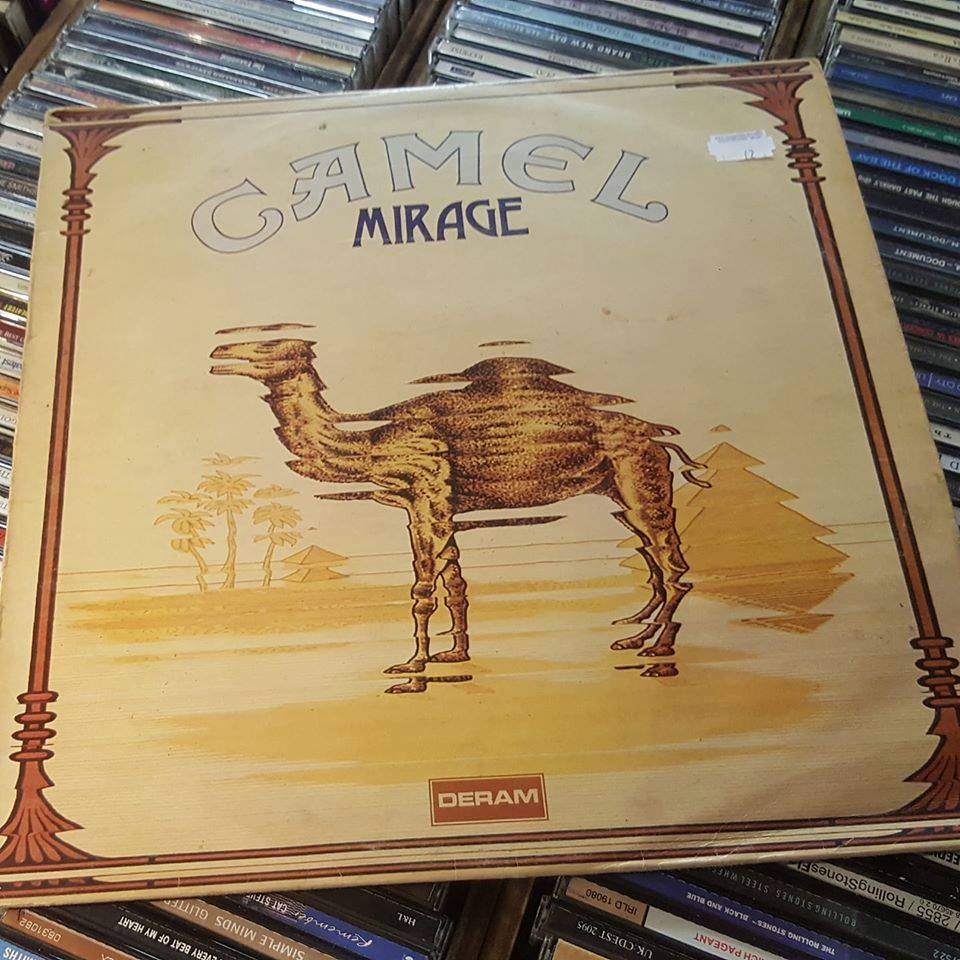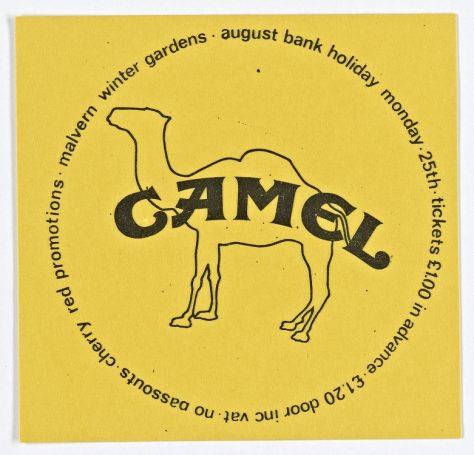(c’71-date) Andrew Latimer (guitar), Andy Ward (drums) and Doug Ferguson (bass)

The trio started out as Guildford based The Brew when they auditioned to be the back-up band to Phillip Goodhand-Tait on 20 Feb ’71. In August that year, the resulting album, “I Think I’ll Write a Song” was released on DJM Records. After this less than successful release the band decided to regroup, placing an ad in Melody Maker. As a result Peter Bardens (keyboards), formerly of Shotgun Express and Them, joined and they played a gig as Peter Bardens’ On on 8 Oct ’71 in Belfast.
They then became Camel with a first gig supporting Wishbone Ash at Waltham Forest Technical College, London on 4 December ’71. On 23 July ’72 the band supported Stackridge at the Civic Hall, Guildford. By August that year they were signed with MCA Records and their debut album “Camel” was released in February ’73. It flopped and the band moved to Deram Records. Later that year the band appeared at the Windsor Free Festival.
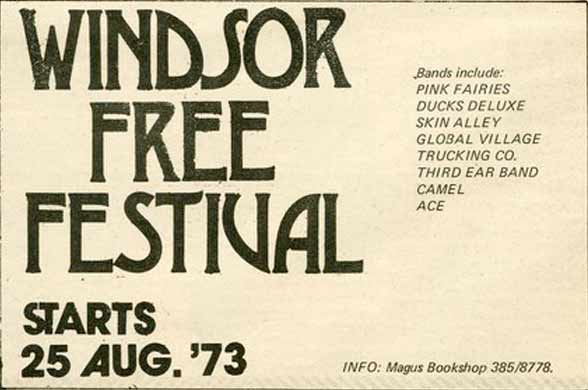
On 1 March ’74 they released “Mirage” on which Latimer played flute. A few months later, 23 August ’74, Camel played opening day of the 1974 Reading Festival with Nutz, Johnny Mars, Hustler, Beckett, 10cc, Fumble and The Sensational Alex Harvey Band. “Mirage” hit the mark in the U.S. leading to a three-month tour that kicked off on 19 November at Ladyland, New York City. Then came “The Snow Goose” in May ’75.
On 6 July ’75 Camel played the New London Theatre, Drury Lane, supported by The Mike Storey Band; and Winter Gardens, Malvern on 25 August 1975. The Snow Goose LPs success led to a sell out concert at the Royal Albert Hall, London, with the London Symphony Orchestra on 17 Oct ’75. With the success came a lawsuit from Paul Gallico, the author of the short story of the same name that inspired the concept album. As a result later versions of the album have the prefix ‘Music inspired by…’ on the front cover and the story notes removed from the back cover.
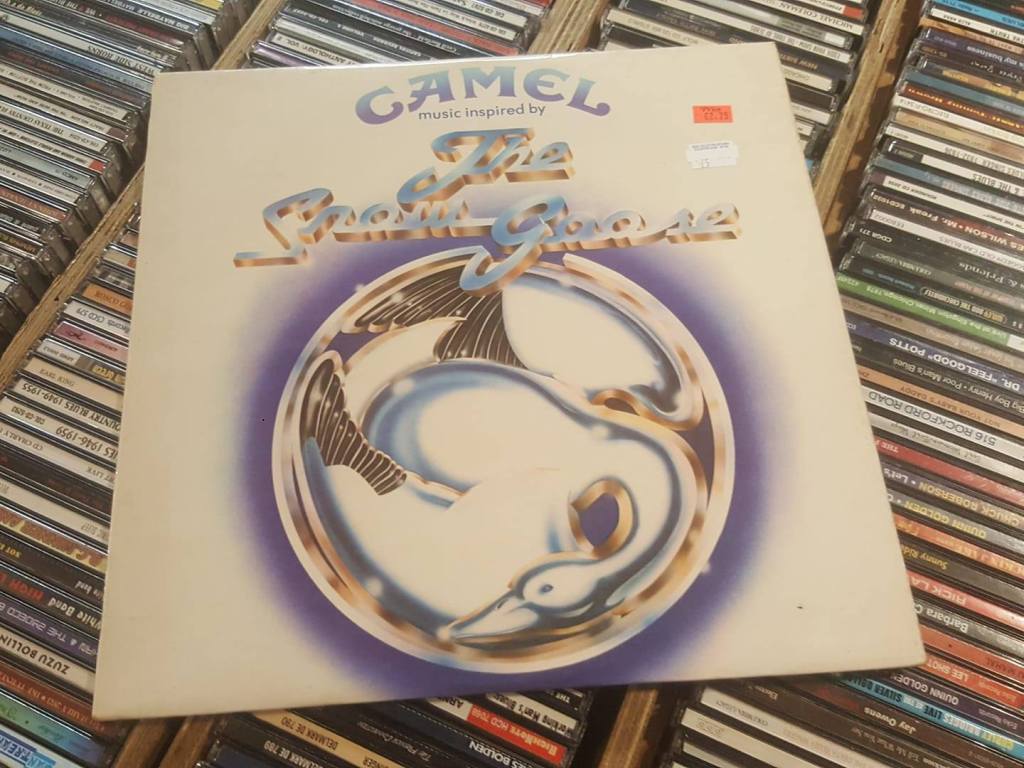
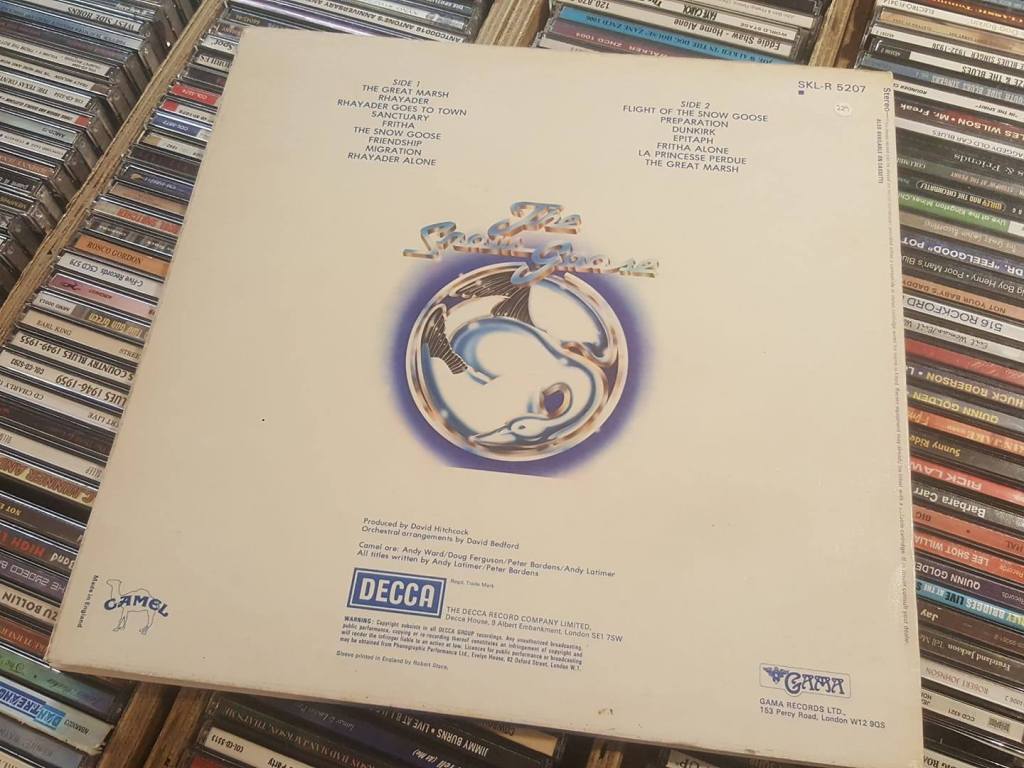
The next year they released their fourth album, “Moonmadness” which continued the success. Ex-Circus saxophonist / flutist Mel Collins’ joined the band for the subsequent tour and stayed involved with the group on and off for eight years. Ferguson departed in early 1977 and was replaced by Caravan bassist Richard Sinclair. This new line-up released “Rain Dances” in ’77 and “Breathless” in ’78. The release of “Breathless” also saw the departure of Bardens, who was replaced by two keyboard players from Caravan: Dave Sinclair (Richard’s cousin) and Jan Schelhaas for the album tour. Both Sinclairs left the band after the Breathless tour, replaced by Kit Watkins (keyboards) and Colin Bass (bass). The success of Camel didn’t stop Latimer returning to his local roots and jamming with the likes of House.

The 70’s closed out with the release of “I Can See Your House from Here”. On 6 October ’79, Camel played at the Farnborough Recreation Centre. The band had been booked to play at Farnborough Tech months earlier, but had cancelled at the very last minute. Having been burnt once, the college’s Social Secretary did not want to book the band again. As a result Cris Savill, unable to find anyone else to take it on, booked the band himself and went down to the Recreation Centre and put down the deposit. Camel’s agency charged him £1500 for the band to play, which Savill recalls as being half what Thin Lizzy charged at the time. The band lived up to expectation and reportedly performed “ICE”, from “I Can See Your House from Here”, live for the very first time – If only the venues acoustics could have done the performance justice. Tim Naylor worked on the stage crew that night and remembers the head roadie telling the crew to “Move this…but watch out…it’s heavy…”; and amazingly being right every time. On 18 October ’79, Camel play Friars, Aylesbury followed by the Apollo, Glasgow on 22 October.

1981’s “Nude” saw their return to the concept album; based on the story of Hiroo Onoda, the Japanese soldier found on an island many years after World War II had ended. Duncan Mackay provided most of the keyboards in lieu of Watkins and Schelhaas, who were involved in other projects, but returned for the tour. This was the first album to feature lyrics by Latimer’s future wife Susan Hoover.
In mid-’81, Ward stopped playing drums as a result of alcohol and drug abuse and Camel quietly disbanded. Years later it was revealed that Ward had attempted suicide. However, there was still a contract to fulfill and pressure from Decca lead to Latimer being joined by guest and session musicians, including David Paton (bass), Chris Rainbow (vocals) and Anthony Phillips (guitar / keyboards). The band continued touring through ’82 and produced “The Single Factor” album and the Tenth Anniversary Tour, featuring Paton, Rainbow, Watkins, Stuart Tosh (drums) and Andy Dalby (guitar) accompanying Latimer. Royalty disagreements lead to a five year legal battle with their former manager. For ’84s “Stationary Traveler” Latimer was joined by Kayak keyboardist Ton Scherpenzeel and ex-10cc drummer Paul Burgess. Bass returned for the tour, which also included Rainbow. Shows at the Hammersmith Odeon were filmed and included additional keyboardist Richie Close and guest appearances by former members Bardens and Collins.
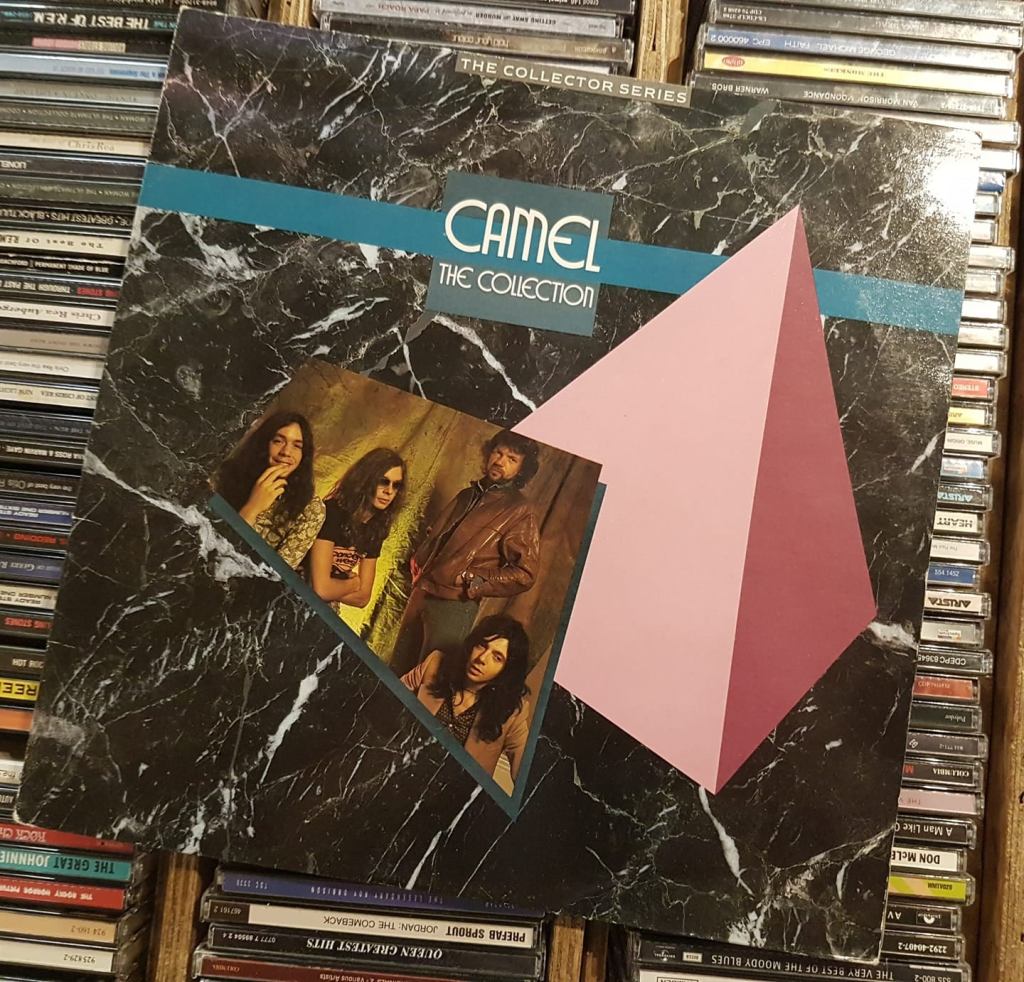
The release of the live album “Pressure Points” in late ’84 wrapped up the the contract with Decca. Then in ’85 “The Collection” a double LP compilation was released on the Castle Music label. But, unable to interest other British record companies Camel quietly disappeared and Latimer moved to California when the aforementioned management lawsuit ended in his favor.
Seven-year later, Latimer revived Camel, releasing “Dust and Dreams”, in ’91. Partly recorded before Latimer’s move stateside it was inspired by John Steinbeck’s classic novel The Grapes of Wrath and released under Latimer’s own label Camel Productions. Mickey Simmonds (keyboards) joined Latimer, Bass and Burgess for the 1992 “comeback” world tour from which the live double CD, recorded in the Netherlands, “Never Let Go”, was released in ’93.
The next year, former members Bardens and Ward formed Mirage with members of Caravan. Their set list included numerous Camel tracks, but this quickly faded as Barden left and the band dropped all the other Camel or Caravan alumni. Inspired by the death of his father, Latimer and Hoover wrote “Harbour of Tears” under the Camel name, released in 1996. They toured again in ’97 with Latimer, Bass, Dave Stewart (drums), and Foss Patterson (keyboards) releasing the “Coming of Age” live double-CD and VHS in ’98.
In ’99 Latimer, Stewart, Bass and Scherpenzeel, recorded “Rajaz”. Stewart left to manage a drum store in Scotland and was replaced by Denis Clement (drums). This was quickly followed by Scherpenzeel’s departure, who was replaced by Guy LeBlanc (keyboards). In 2002 this new quartet released “A Nod and a Wink”, dedicated to Bardens, who died in January 2002. Latimer’s Camel Productions announced that the 2003 tour would be Camel’s ‘Farewell Tour’. LeBlanc quit shortly before the tour due to the illness of his wife, and was replaced by Tom Brislin in the US and Scherpenzeel for the European leg.
In May 2007, Hoover announced through Camel Productions that Latimer has suffered from polycythaemia vera since ’92 which had progressed to myelofibrosis. Latimer underwent chemotherapy and a bone marrow transplant in November 2007. He responded well, but has suffered fatigue and severe joint pain since, as recovery progresses.
In March 2013, Camel Productions confirmed a ‘Retirement Sucks Tour’ with the announcement of a concert at the Barbican Arts Centre, London on 28 October, where Camel would perform The Snow Goose “in its entirety for the first time since the Royal Albert Hall concert in 1975” (the last full performance was actually at Reading Town Hall on 18 December 1975) with other dates across Europe. The band also released a new and extended re-recording of The Snow Goose album on 4 November 2013, “dedicated to the memory of Peter Bardens (1945-2002)”, and also thanks Ferguson and Ward for their contributions to the original music and album.
Shortly after the 2013 tour, Camel announced a further 14 dates in 2014. Ill health prevented LeBlanc taking part, and was replaced by Scherpenzeel. LeBlanc died in April the next year. In October 2017, Camel announced a concert at the Royal Albert Hall, London for the following September; and 30 more dates in Japan, Turkey, Israel, Netherlands, Poland, Germany, Spain, Portugal and England, where the band would perform ‘Moonmadness’ in its entirety.
When Ferguson left in ’77 he formed Headwaiter and later became a property developer.
Gallery:

